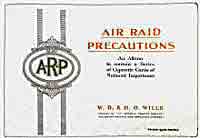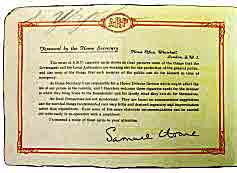
Cigarette cards publicise WW2 air raid precautions for keeping safe
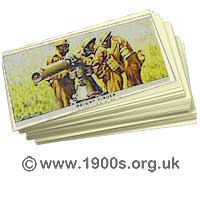
For many years it was the practice for cigarette manufacturers to put what was called a 'cigarette card' inside each packet of cigarettes. These had a picture on one side and information about the picture on the other side. There were various themes to the cards, and children would pressurise adults to buy more cigarettes so that they could collect complete sets. Consequently, there were numerous cigarette cards in circulation. The theme on air raid precautions and keeping safe on the WW2 home front was therefore ideal for continually reminding the public on safety issues. This page starts by showing the cigarette cards on this theme with captions of the accompanying text; then it shows how collections of cards were mounted in albums.
Set of cigarette cards on protection from WW2 air raids
Below is a set of cigarette cards on the theme of protecting the home front from the air raids of the Second World War. The set was produced by the cigarette company 'Wills', in collaboration with the ARP (Air Raid Precautions), an organisation dedicated to the protection of civilians from the danger of air-raids. The album was photographed in Lincolnsfields Children's Centre in Bushey.
The album reinforces the messages in the Government's public 1939 leaflet describing the preparations 'if war should come'.
The following pictures would be of a size to fit into a packet of ten cigarettes.

Types of splinter-proof wall: brick; rubble in corrugate iron and cardboard boxes of rubble, to protect against bomb blast.

Protecting walls and windows of a 'refuge room' with sandbags stacked outside, to protect against bomb blast.

Equipping a 'refuge room': the area for living, eating, drinking, reading and listening to the radio.

Stage in the production of an Anderson shelter in a back garden. This one has an extra gas-proof filtration facility which can be worked by electrical or manual treadle labour.

French-style inflatable 'balloon' shelter. Said to be quick to inflate but expensive. [I think it very unlikely that it would be quick to inflate!]

Putting out an incendiary bomb with water from a hose pipe.

Carrying water in buckets
in a human chain.

A type of manual pump for two people.

A hose-laying lorry.

Emergency heavy pump unit.

A medium-weight power pump in action.

A power pump for towing on a car trailer.

Gas mask (known as a respirator) for civilians.

How to put on and adjust a gas mask.

Air raid wardens with a civilian despatch driver.

Volunteer mobile corps of owner drivers.

A first aid party.

Civilian anti-gas school.

Mobile gas vans.

Decontamination workers in training.

Air Defence Control Room.

Anti-Aircraft search light.
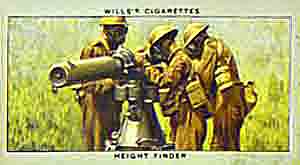
A height finder for the Anti-Aircraft Gun Section.

A light-weight, portable fire extinguisher.

Putting out an incendiary bomb by scooping it into a portable container.

Inside a gas-proofed shelter.

A light-weight power pump in action.

Supply depot for gas masks.

How to take off a gas mask.

Civilian duty gas mask.

Testing for gas contamination.

Rubber clothing.

Pilots running to take off.

How to recognise an incendiary bomb which causes fires.

Gloucester Gauntlet interception fighter planes.

Anti-Aircraft barrage balloons for the defence of London.

Gas mask for the services - with a longer active period than civilian gas masks.

The badge of Air Raid Precautions, a civilian service.

Window of strengthened glass (left) and celluloid (right) to prevent shattering.

Anti-Aircraft sound locator.
Cigarette card albums
Albums for the sets of cards could be bought very cheaply from tobacconists. There was a labelled space for each card in the theme. Because sticking in the card obscured the information on the back, the information was repeated below the space for each card.
Left: The front cover of the cigarette card album on Air
Raid Precautions.
Right: The inside front cover, with a message from the then
home secretary, Sir Samuel Hoare, Bt.
Tap/click for larger, legible images
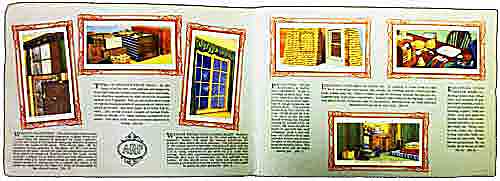
Layout of album pages.
If you can add anything to this page or provide a photo, I would be pleased if you would contact me.
sources: early 20th century material
sources: ww2 home front and other material
contact
the webmaster/author/researcher/editor
privacy policy

















